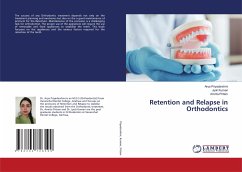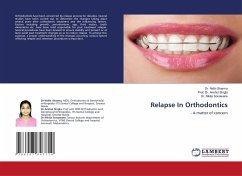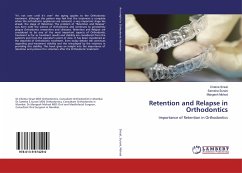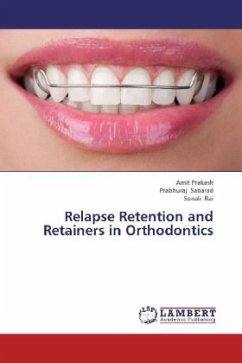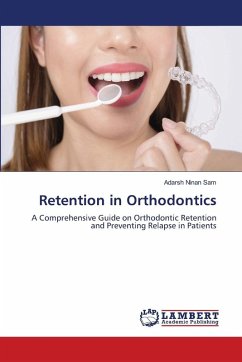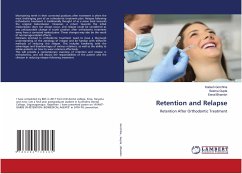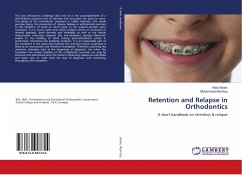
Retention and Relapse in Orthodontics
A short handbook on retention & relapse
Versandkostenfrei!
Versandfertig in 6-10 Tagen
41,99 €
inkl. MwSt.

PAYBACK Punkte
21 °P sammeln!
The real orthodontic challenge does not lie in the accomplishment of a well-finished occlusion but to maintain the correction for years to come. This phase of the orthodontic treatment is called retention, the whole purpose being, the prevention of relapse. Relapse in orthodontics pertains to the tendency of teeth to return back to the original position post-treatment. It is a much wider term which involves return of correction of skeletal dysplasia, both dentally and skeletally, as well as the dental malocclusion returning towards the pre-treatment position. Retention implies to the holding o...
The real orthodontic challenge does not lie in the accomplishment of a well-finished occlusion but to maintain the correction for years to come. This phase of the orthodontic treatment is called retention, the whole purpose being, the prevention of relapse. Relapse in orthodontics pertains to the tendency of teeth to return back to the original position post-treatment. It is a much wider term which involves return of correction of skeletal dysplasia, both dentally and skeletally, as well as the dental malocclusion returning towards the pre-treatment position. Retention implies to the holding of teeth during post-orthodontic phase in anatomical, functional and aesthetic positions. It is an inseparable part of the treatment in the sense that without the retention phase, treatment is likely to be unsuccessful and therefore incomplete. Therefore, planning the retention strategies start at the beginning of diagnosis, not when the treatment has ended. Stability of the orthodontic outcome can only be achieved and maintained once the factors influencing relapse are identified and taken care of, right from the step of diagnosis, and continuing throughout the treatment.




